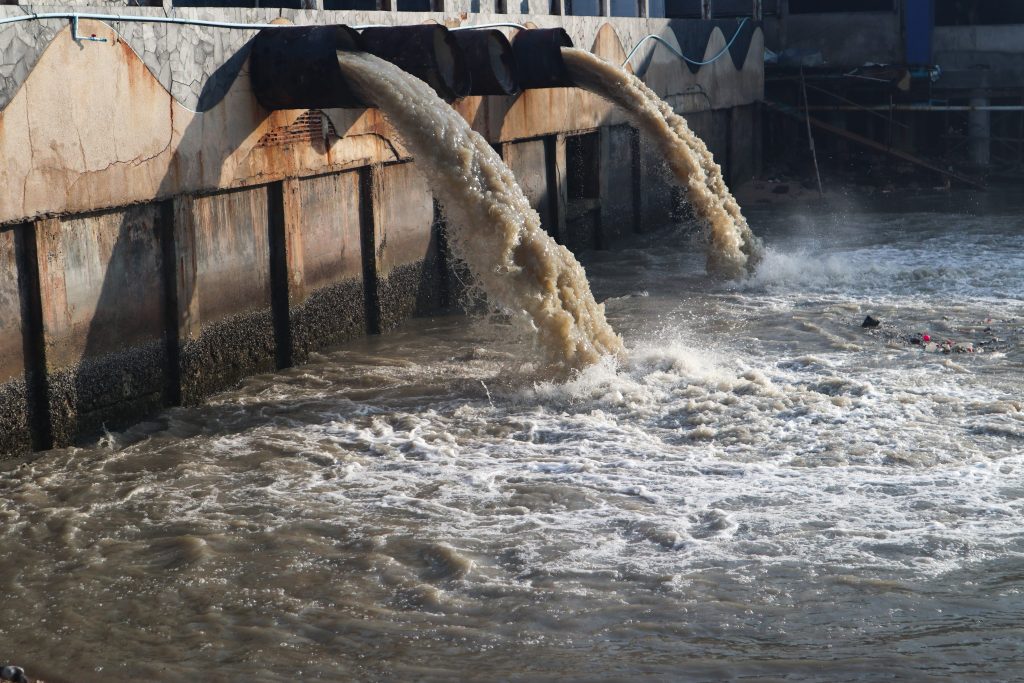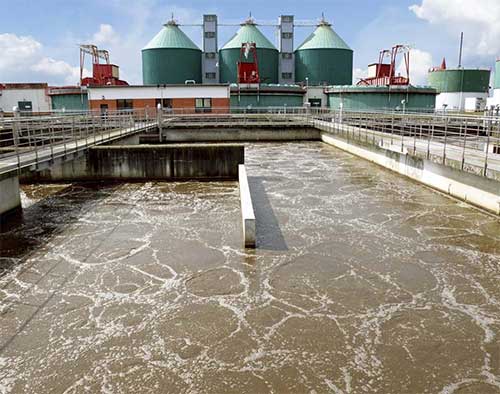Technologies and Developments in Industrial Waste Water Therapy Technologies
The landscape of industrial wastewater treatment is going through a transformative shift, driven by developments that improve both effectiveness and sustainability. As regulative requirements progress, the combination of AI and maker discovering right into wastewater administration systems guarantees to enhance operations and make sure compliance.
Overview of Drainage Therapy Technologies
Wastewater therapy innovations include a series of methods designed to get rid of impurities from commercial effluents before their release right into the atmosphere. These innovations are crucial for keeping eco-friendly equilibrium and making sure compliance with ecological laws. The main categories of wastewater therapy include physical, chemical, and biological approaches, each serving distinct objectives based on the nature of the contaminants existing.

Biological treatment techniques use microorganisms to deteriorate raw material, making them specifically effective for organic-rich effluents. Techniques like activated sludge and biofilm reactors harness the all-natural degradation abilities of germs, causing substantial decreases in biochemical oxygen need (FIGURE)
Advanced Filtration Techniques
Advanced filtration techniques represent an important advancement in the world of commercial wastewater therapy, boosting the performance of impurity elimination procedures. Industrial Waste Water Treatment. These techniques include a variety of innovations, including microfiltration, ultrafiltration, nanofiltration, and reverse osmosis, which offer sequential barriers for various particle dimensions and chemical frameworks
Microfiltration and ultrafiltration use membrane systems to remove suspended solids, bacteria, and bigger natural molecules, enhancing the quality of effluent before more therapy. Nanofiltration connects the gap between ultrafiltration and turn around osmosis, successfully eliminating natural substances and divalent ions, therefore reducing the load on downstream procedures.
Reverse osmosis uses the greatest level of filtration by enabling only water and tiny particles to go through its semi-permeable membrane layers, making it excellent for recovering premium water from industrial effluents. Current improvements in membrane modern technology, consisting of the development of even more fouling-resistant and durable products, have significantly enhanced operational performance and decreased prices.
Integrating these advanced filtering techniques not just enhances the general treatment procedure but likewise adds to sustainability efforts by making it possible for water reuse and resource recuperation in industrial setups. (Industrial Waste Water Treatment)
Biological Therapy Innovations

Furthermore, the growth of engineered organic systems, such as membrane bioreactors (MBRs), combines organic treatment with innovative membrane purification. This combination allows for greater effluent quality and lowered footprint, making it suitable for space-constrained industrial facilities. Developments in genetically crafted microbes have actually likewise arised, enhancing the biodegradation of certain pollutants, such as pharmaceuticals and hefty metals, that are commonly testing to eliminate.
In addition, the application of bioaugmentation strategies, where valuable microorganisms are presented to enhance the existing biological therapy processes, has actually revealed promising lead to boosting treatment efficiency. These technologies collectively symbolize a trend towards even more effective and lasting organic treatment approaches that can adjust to the evolving complexities of commercial wastewater streams. As sectors remain to prioritize environmental conformity, these organic technologies will play a vital duty in wastewater monitoring.

Source Healing Approaches
In commercial settings, the combination of resource recuperation methods has actually ended up being significantly crucial for enhancing sustainability and lessening waste. These methods concentrate on extracting beneficial materials and power from wastewater streams, thus changing potential contaminants into recyclable sources.
One popular strategy is nutrition recuperation, where nitrogen and phosphorus, frequently existing in excess in wastewater, are caught and exchanged fertilizers. This not just reduces environmental influences but likewise gives a circular economic climate remedy for agricultural applications. Furthermore, technologies such as anaerobic food digestion permit the conversion of organic waste into biogas, a renewable resource source that can offset nonrenewable fuel source usage in commercial operations.
Additionally, progressed purification and membrane modern technologies facilitate the recovery of industrial byproducts such as steels and salts. These recovered materials can be reintegrated into manufacturing procedures, lowering the demand for virgin resources.
Future Trends in Waste Water Management
As markets progressively focus on sustainability, the future of wastewater administration is readied to undertake substantial transformations. Technological advancements, such as expert system and artificial intelligence, will allow much more effective tracking and management of wastewater systems. These technologies can predict maintenance needs, maximize navigate to this site therapy procedures, and improve decision-making, eventually decreasing operational costs and ecological influence.
In addition, the assimilation of circular economic climate principles will certainly play a critical duty in wastewater administration. Industries are expected to shift in the direction of systems that not just treat wastewater but additionally recoup useful resources, such as nutrients, water, and power. This change will minimize waste and advertise the reuse of products, aligning with global sustainability objectives.
Arising treatment strategies, such as membrane layer bioreactors and advanced oxidation procedures, will further boost the efficiency of wastewater treatment, permitting higher quality effluents ideal for reuse. Furthermore, regulatory structures are likely to progress, highlighting more stringent requirements for wastewater discharge and encouraging markets to adopt cutting-edge treatment remedies.
Final Thought
In final thought, the advancement of commercial wastewater treatment technologies demonstrates a considerable change in the direction of enhanced efficiency and sustainability (Industrial Waste Water Treatment). Advancements in innovative purification strategies, biological treatments, and resource recovery methods highlight the market's commitment to environmental stewardship.
The landscape of industrial wastewater treatment is going through a transformative change, driven by advancements that boost both performance and sustainability.Wastewater therapy modern technologies incorporate an array of approaches made to get rid of click for source contaminants from industrial effluents prior to their launch right into the setting.Using the power of organic procedures has led to significant innovations in the treatment of industrial wastewater.In addition, the execution of bioaugmentation approaches, where beneficial germs are presented to boost the existing organic treatment processes, has actually revealed appealing results in improving treatment performance. These innovations jointly indicate a fad in the direction of more reliable and lasting biological treatment approaches that can adjust to official site the evolving complexities of commercial wastewater streams.